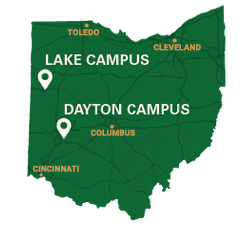
1. What is the difference between remote and online teaching?
Remote Teaching
- Temporary shift to alternative delivery mode due to crisis
- Remote teaching solutions will return to earlier formats
- Primary objective is not to re-create a robust educational ecosystem but rather temporary access to instruction
Online Teaching
- Develop a pedagogically sound online course - careful design + instructional designer
- The design and planning process can take 6-9 months
- Design consideration has impact on the high quality of the course (Quality Matters)
- Complex design based on dimensions of modality, pacing, student-instructor ratio, pedagogy, instructor/student role online, assessment, and online communication
2. What is Remote Delivery?
An online course where 100 percent of the direct faculty-led instruction is delivered in a synchronous or asynchronous instruction mode. Students do not need to be on-campus for any portion of the course work, homework/independent student preparatory work or evaluation. Instruction and interaction occur through the internet, such as via the university-managed Learning Management System (LMS).
Differences between Asynchronous (D1A) and Synchronous (D1S) Remote Delivery
Asynchronous—Fully Online/No Set Meet Time. (D1A) Students do not meet on specific days and times, which allows for a great deal of flexibility.
- Students can work at their own pace or scheduled due dates.
- Faculty can still engage in robust interactions with their students throughout the course.
- Students and faculty primarily communicate via written or digital communication such as Slack, Google phone, etc.
- Examples include—Self-paced modules or time-released modules in Pilot. Faculty can record video lectures or video reactions/responses, and conduct class activities such as annotated Perusall readings, podcasts, active learning, and laboratory assignments. Students can also participate in asynchronous video postings such as Flipgrid and Adobe Spark.
Synchronous—Fully Online/Set Meet Time. (D1S) Students meet online during published scheduled days and times. Students in remote classes will have a high-level, real-time interaction with their faculty instructor and fellow students during the scheduled times.
- Live, web-based communication
- Students and faculty talk in real-time
- Example: Use real-time video conferencing tool (Blackboard Collaborate Ultra) that lets you add files, share applications, and use a virtual whiteboard to interact with students.
(New) Asynchronous/Synchronous—Fully Online Delivery Choice/Set Meet Time. (DIC).
- Still work in progress with Faculty Senate Undergraduate Academic Policy Committee (UAPC).
- Students will have choice of synchronous or asynchronous delivery.
- Set meetings days and times such as via the university-managed LMS and online course meeting tools will be listed in the course schedule.
3. What is the difference between Face-to-Face (D4) and Flexible Delivery (D5)?
Face-to-face delivery (D4): A course that is offered with direct faculty-student interaction occurring primarily in-person, may include some online instruction (not to exceed 20 percent). There is no remote option. The learning objectives of these courses cannot be imparted remotely; for example, clinicals, practica, and labs involving use of equipment.
Flexible delivery (D5): This delivery approach combines in-person delivery with a remote option. Faculty must provide a remote option for students to select. Faculty have choices in how to deliver this remote option (live broadcast, recording, or some other delivery of course material).
- A remote option allows for students unable to attend the in-person components of a course to participate in the course. Students are not required to submit documentation or rationale for participating in the course remotely.
- There are a variety of instructional ways faculty may decide to teach using this delivery.
- Examples may include, but not limited to: online lectures with in-person discussions/hands-on activities, in-person lectures/hands-on activities with remote options, and adopting “flips," in-person participation is staggered to allow for physical distancing whenever possible (such as, half the class might meet in person early in the week and the other half later in the week).

